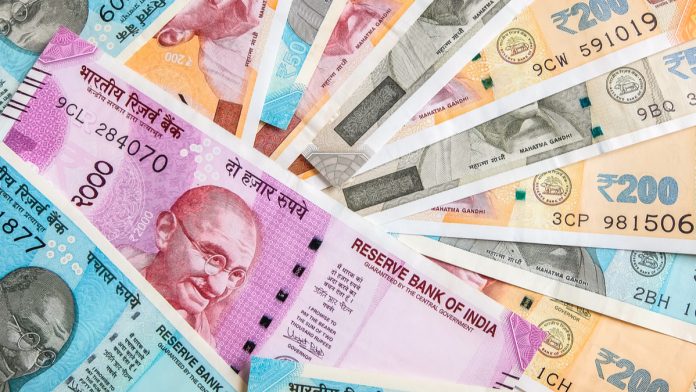- Indian Rupee (INR) extends losses as investors sell out of riskier assets as global covid cases surge
- Falling oil prices limit sell off
- US Dollar (USD) rises on safe haven flows
- US fiscal stimulus before US elections looks unlikely
The US Dollar Indian Rupee (USD/INR) exchange rate is extending gains for a sixth straight session. The pair gained 0.75% across the previous week, closing on Friday at 73.82. At 11:15 UTC, USD/INR trades +0.2% at 73.99. This is towards the top end of the trading range.
The Indian Rupee is on the back-foot owing to strong risk aversion in the financial markets. Record numbers of new daily covid numbers in the US and in Europe is unnerving investors. Tighter lockdown measures are being brought in across the board in an attempt to stem the spread of the virus. Fears are growing that these measures will derail the fragile economic recovery quickly.
As a result, risk sentiment has taken a hit and investors are selling out of riskier assets and currencies such as the Indian Rupee in favour of the safe haven US Dollar.
Falling oil prices are at least limiting the losses on the Rupee. West Texas Intermediate trades over 2% lower, extending losses from last week as surging coronavirus cases in both the US and Europe are raising concerns over oil demand. Meanwhile, Libya’s fast-growing production is also dragging on prices.
The US Dollar is advancing not only versus the Indian Rupee but also its major peers. In addition to covid fears investors are also downbeat over the prospect of additional US fiscal stimulus being agreed prior to the US Presidential elections.
Both the House Speaker Nancy Pelosi and the White House Chief of Staff Mark Meadows are accusing each other for the lack of progress in talks. There is now less than a week to go until the elections on 3rd November and there is little motivation from either side to push a deal over the line.
There is no high impacting US data due for release today. Mid-tier home sales data release will be in focus as well as US politics as investors look towards the polls.





